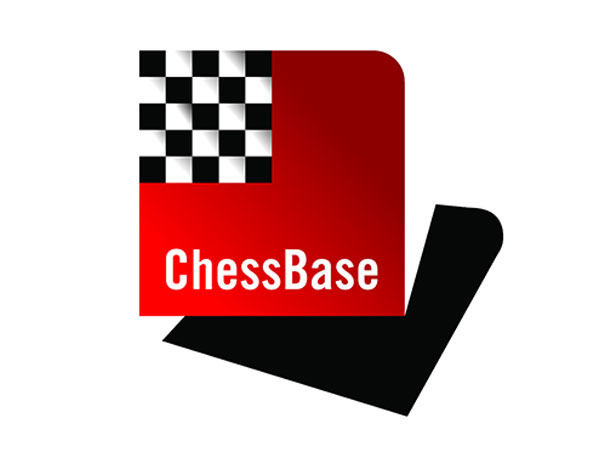Solutions to the puzzles from the
In our previous
report Yochanan Afek provided us with two spectacular studies from the Corus
Study Day. The were published in The Problemist and we had permission
to reproduce them.
Piotr Murdzia + Andzey Jasik
The Problemist 2009

White to play and draw
It looks as though White has an easy draw, but after the obvious key you must
look for a spectacular black counter-attack. White has to set up a very clever
positional draw in order to save the day. Peter Murdzia (Poland), a strong over-the-board
IM, is the current world champion solver. He could not attend the event this
time and sent this lovely study with greetings instead.
Solution: 1.Bb5! 1.Rh1? Nxf2 2.Rxh2+ Kg3 and Black wins. Now
it looks like White will obtain an easy draw, however Black comes up with an
astonishing counter-attack. 1...Ra1!! 2.Rxa1 Nc1! 3.Rxc1 Bg5+

Afek presenting the solution to the Murdzia/Andzey study in Wijk aan Zee
Game over? Not quite! 4.f4!! Closing for a moment one diagonal, thus
gaining precious time to open the longest one for the final combination. 4...Bxf4+
5.Ke2 Bxc1 6.Ne5! h1Q 7.Bc6 Qh3 8.Bd7! Qg2 9.Bc6.
Draw. The black lady can find no refuge. A surprising positional
draw! [The queen has no squares: if she moves to g1, h2 or g5 she will fall
to a knight fork; if she moves to h3 the bishop attacks from d7; and on any
other square she is simply taken.] [Click
to replay]
Jan Timman
The Problemist 2009

White to play and win
This study by the legendary over-the-board Dutch grandmaster contains an very
beautiful pawn sacrifice, the purpose of which only becomes apparent at the
end of the winning line.
Solution: 1.Rd1 a3! To create threats along the fourth
rank. 2.bxa3 Ra4+
3.f4!! The significance of this sacrifice will become apparent only
on the last move. If 3.Kg3? then 3...Rd4! saves Black. 3...Rxf4+
4.Kg3 Rd4! 5.Rxd4! e2
6.Rd6+! Kh7. 6...cxd6 7.Ba5 wins for White. 7.Rh6+! Kxh6 8.Bg5+!
Kxg5
After sacrificing the pawn on move three, and then all his pieces, White now
provides us with the point of the entire magnificent combination: 9.f4+!
There follows 10.Kf2 and White wins. 1-0.
This was one of the two beautiful studies composed by Jan Timman especially
for this event. [Click to replay]
There is one more beautiful Reti-Memorial study, composed by Yochanan Afek,
that we are waiting to show you. But it needs to be published in a problem magazine
and submitted for competition first.
Solutions to the problems from the
2009 British Problem Solving Championship
Vladislav Tarasiuk, Ukraine Album 2005

White to play and win
Solution: The main line runs 1.e7 Nh6+ 2.Kg6 Ng8 (In
the British Problem Solving Championship Piotr Murdzia incorrectly gave 2...Bh5+
3 Kxh5 Ng8, which loses trivially after 4 Be6+) 3.Be6+ Kd6 4.e8Q (4.e8R
is equally good) 4...Bh5+ 5 Kxh5 Nf6+ 6 Kg6 Nxe8 7 Kf7 Nc7 8 Ne4#. [Click
to replay]
Marko Klasinc, Original for WCBCSC 2009

Helpmate in six
(a) Diagram (b) Move the black queen to e8
In a helpmate, Black moves first and both sides cooperate to help White mate
Black. In a helpmate in six, this mate takes place on White’s sixth move (thus
both sides play six moves). In the second part of the problem, you have to move
the black queen from a3 to e8 and again find a helpmate in six. The solvers
found this problem one of the hardest in the competition and only the two over-the-board
GMs managed to solve it completely.
Solution:
a) 1...Qd6+ 2 Kc4 c5 3 Kb5 Ke5 4 Nd7+ Kd5 5 Ka5 Kc6 6 Ka6 Bd5 7 Nb8#.
b) 1...Kf5 2 Nd7 Ke6 3 Nc5+ Ke7 4 Ke5 Bd5 5 Kf5 Kd6 6 Kf6 Qd7 7 Nb7#.
[Click to replay]
Mikhail Marandiuk, 1st Prize Shavirin-50 Jubilee

White to play and mate in 4 moves
This was the most attractive problem used in the event. In order to get full
marks the solvers had to give the key, the threat, and all variations in which
Black can delay mate until White’s fourth move. All lines had to be given up
to White’s third move. Five points were available for this problem, divided
up as follows:
1.h3! (one point for the key, which threatens 2.Be6+ Ke4
3.Bxc4+ Kf3 4.Bd5#; one extra point for giving this threat up to
3.Bxc4+).
Black’s two main defences are 1...Nf3 and 1...Nd3, which are dealt with as
follows:
1...Nf3 2.Re3 (threat 3 Be6#) 2...Nxe3 (you get half a point
for giving 2...Ne5 3.Bxe5; even though this is rather a ridiculous defence,
technically it does delay mate until the fourth move and so should be given)
2...Nxe3 3.Be6+ Ke4 4.Nc5# (half a point for giving this up
to 3.Be6+);
1...Nd3 2.Bc3 (threat 3 Nf6#) 2...bxc3 3.Nf6+ Kd4 4.Re4# (one
point for giving this up to 3.Nf6+).
These two defences were both refuted the same way. In each case, Black’s first
move blocked a square which his king would need in the future. In both lines,
White sacrificed a piece to create a second block for the king; these sacrificial
moves involved the white piece crossing the square on which White would give
a check on the third move.
There were two less important lines which, however, still had to be given for
full marks:
1...Rd2 (blocking d2) 2.Re5+ Kd4 3.Rxe1+ (half a point
for giving up to here) 3...Kd3 (or 3...Kd5 4.Be6#) 4.Nxb4#.
1...Re2 2.Rxe2 (threat 3.Be6#) 2...Ne3 3.Rxe3 (half a point
for giving up to here) followed by 4.Be6#.
[Click to replay]

Click for crop from original plate (well, actually from the original JPG)
For today's astronomy picture, we travel a bit further from home, eleven million
light-years to be precise (or in fact imprecise, as the distance is not known
to any great accuracy). This is the galaxy M82, sometimes known as the Cigar
Galaxy. The irregular knots and dark lines visible in the photograph show that
something is happening in M82, and a Hubble picture shows more clearly that
there are great jets of dust and gas streaming out of the centre of M82. The
reason for this is that in the recent past (which here means about 600 million
years ago) M82 nearly collided with the massive spiral galaxy M81. The gravitational
pull of M81 disrupted M82's structure and triggered a massive burst of star
formation, the effects of which we can still see today. The above picture was
made using my 10 inch Meade
LX200 GPS telescope. – John Nunn.
Links
























